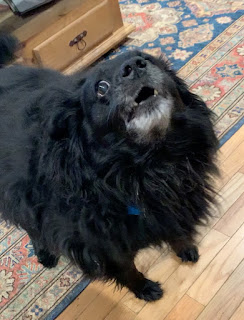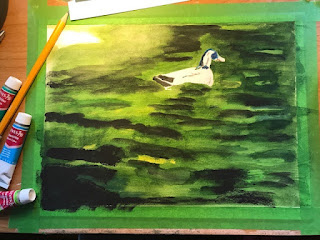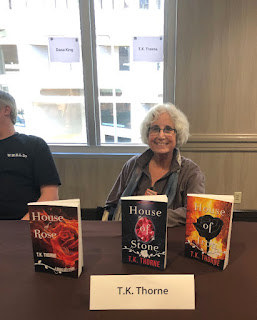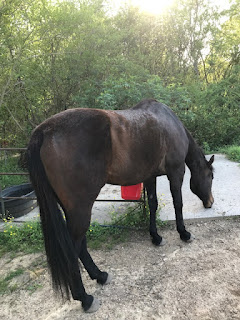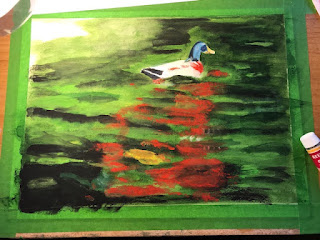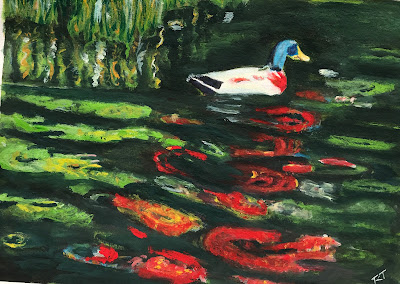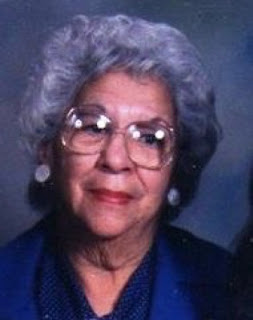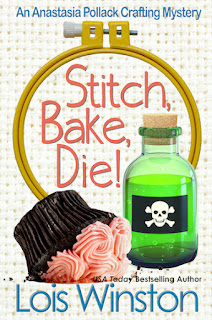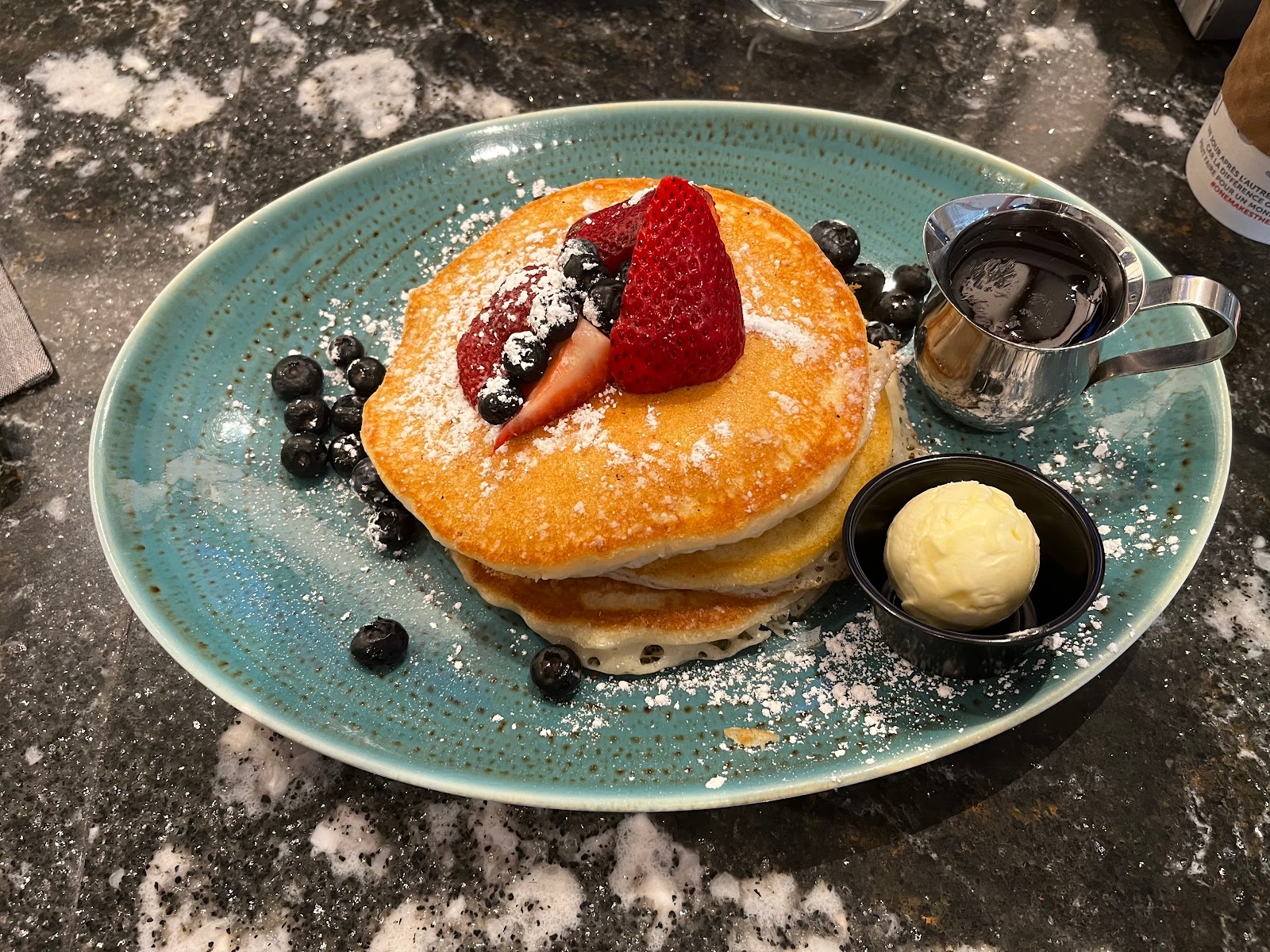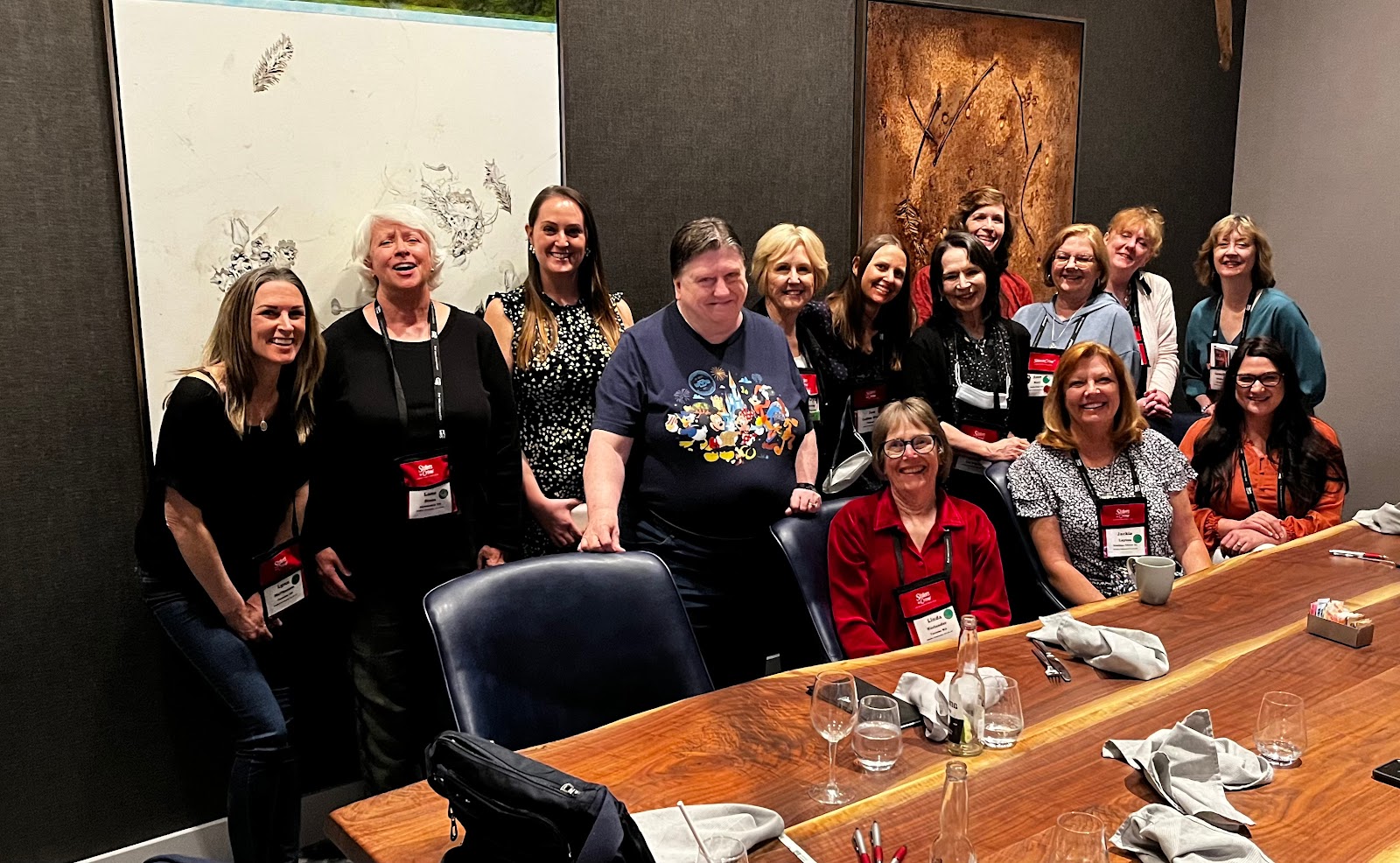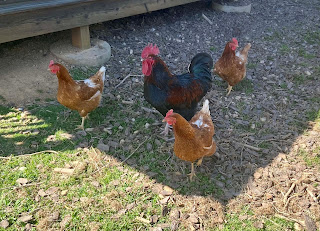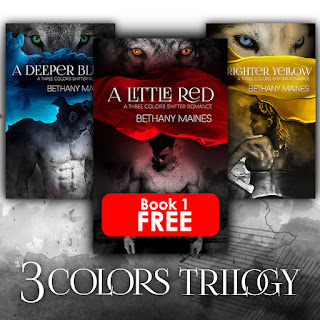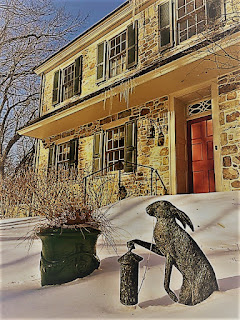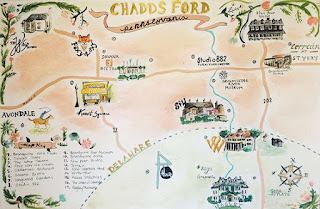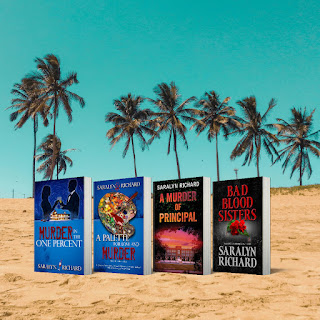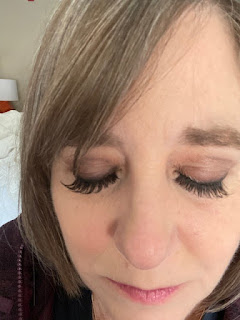by Paula Gail Benson
Next weekend, after a two year absence,
a group of devoted readers and writers will gather in Bethesda, Maryland, to
celebrate the traditional mystery at Malice Domestic. Each year, it’s been a great
privilege for me to interview the Agatha nominees for Best First Novel and Best
Short Story. Through this message, please enjoy meeting or reacquainting
yourself with these wonderful authors, and don’t forget to click on
the links to read the nominated short stories!
Congratulations to all the nominees and
thank you for spending time with us at The Stiletto Gang!
Best First Novel
The Turncoat’s Widow by Mally Becker (Level Best Books)
A Dead Man’s Eyes by Lori Duffy Foster (Level Best
Books)
Arsenic and Adobo by Mia P. Manansala (Berkley)
Murder in the Master by Judy L. Murray (Level Best
Books)
Mango, Mambo, and Murder by Raquel V. Reyes (Crooked
Lane Books)
What has been
your most unexpected experience with the publication of your first novel?
 |
| Mally Becker |
Mally:
The nomination of The Turncoat’s Widow for an Agatha Award
in the “best debut” category is one of the most unexpected and humbling
experiences of my life. I am honored beyond belief, and the nomination still
doesn’t feel real.
Beyond that, I am
gobsmacked by how much kindness has come my way in the wake of writing and
publishing this book. There were historians and curators who gave their time gratis, authors (you know who you are)
who shared their wisdom and support freely, and family, friends, librarians,
and strangers who took the time to reach out and send good wishes.
Each act of kindness feels like a moment of grace,
reminding me that, even in this time
of discord, there is a tremendous amount of goodness in the world. That
revelation has been the most unexpected, welcome surprise of all.
Lori:
Book promotion has been much more time-consuming than I
had expected, but what has surprised me most is the level of support I have
experienced from my local community. There are huge advantages to living in a
rural area. We are spread-out, but we are also tight knit. Everybody really
does know everybody even if they are separated by ten or fifteen miles. I
expected some support, but not like this. Everywhere I go, people ask when the
next novel is releasing. I feel like they are honestly happy for me. I am truly
fortunate.
 |
| Mia P. Manansala |
Mia:
I wrote this book after the previous novel I’d written failed on
submission–Arsenic and Adobo was meant to be a book for me and my mom,
who’d introduced me to the world of cozy mysteries in the first place. So the
fact that something I wrote for mostly personal reasons has managed to connect
with so many people is amazing and completely unexpected.
Judy:
Gaining an Agatha Award nomination for Best First Novel is an
absolute, unpredicted thrill. I’m so, so honored to be a part of this legacy of
talented writers. I discovered an amazing community of people open to helping
each other grow. I need to do the same in return.
I recently held a two-hour book talk and the joy and fun of
discovering how much Murder in the Master readers were totally engaged
in my characters’ lives was fantastic. They laughed and questioned and probed.
 |
| Raquel V. Reyes |
I’d add that for Murder in the Master, launching the
storyline with a murder in the first paragraph was a big leap. Pure instinct. Thank
goodness so many readers love that opening! I also deliberated, with a whole
lot of angst, about the concept of creating my squad of favorite, famous
sleuths to help my protagonist investigate the crime. Readers love it. They enjoy seeing these
favorites bring their crime solving talents and uniqueness into a current day
mystery. They’ve also told me Helen’s personality has struck a chord. She’s
quick-witted and likes to verbally spar, especially with her possible love
interest, and readers are cheering her along. Overall, I’d like to encourage other writers to get their
creativity down on paper. Don’t allow, like I did, life’s practicalities to
delay their writing.
Raquel:
In my wildest dreams, I never would have imagined that Mango, Mambo, and Murder would get a NYT
Book Review.
Best Short Story
“A Family Matter” by
Barb Goffman (Alfred Hitchcock Mystery Magazine Jan/Feb
2021)
“A Tale of Two Sisters” by
Barb Goffman in Murder on the
Beach (Destination
Murders)
“Doc’s at Midnight” by
Richie Narvaez in Midnight Hour (Crooked
Lane Books)
“The Locked Room Library” by
Gigi Pandian (Ellery Queen Mystery Magazine July/Aug
2021)
“Bay of Reckoning” by
Shawn Reilly Simmons in Murder on the
Beach (Destination Murders)
How do you create realistic
antagonists in short stories?
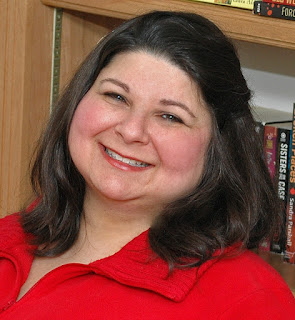 |
| Barb Goffman |
Barb:
The process for creating a realistic antagonist is the same as the
process for creating a realistic protagonist and other characters. Think about
their feelings, their motivations, and their emotional needs, because it’s
these things that prompt each character’s actions.
One good way to do this is to put yourself in the characters’
shoes, which will allow you to see the situation in question from their
perspectives. With this insight, you should be able to have each character act
and react as real people would and also act differently from one another.
In “A Tale of Two Sisters,” Robin is strong while her sister, the
bride, is anxious. Robin is determined to ensure the night goes well for Emma.
It’s that motivation that prompts her actions throughout the story. If Robin
were anxious too, the story would have unfolded quite differently.
Similarly, in “A Family Matter,” Doris reacts negatively to
the family that moves in next door, not because she’s a mean person but because
she believes it’s vital that this family not bring the neighborhood down. If
Doris were more low-key, like another neighbor, Audrey, she would have reacted
differently to things the new neighbors did. As a result, she wouldn’t have
discovered a certain secret, and the story would have had a very different
ending.
So, given that characters could act differently in any situation,
it’s imperative for the author to understand who each character is, what
motivates him or her, and think about how those motivations come into play with
every action. This applies whether the character is the protagonist,
antagonist, or even a sidekick.
Richie:
The same as you would a protagonist: Make them as
tangible as possible. Does he have a favorite flavor of ice cream, a certain
way of speaking, a pet cockatoo? Little details help the reader see them as
more than just cartoony two-dimensional people. And we should know their
motivations. Most of us are happy to pay rent and vacation once in a while, but
what makes this person want to kidnap, murder, lie, steal, take over the world?
“Doc’s at Midnight” is fairly short, so we don’t get to hang out with the antagonists for very
long, but when we do we get their motivation, and we see how it is anchored in
a decades-old pain that echoes the struggle that the two main characters are
going through, attempting to review and recover from the past.
 |
| Gigi Pandian |
Gigi:
Such an interesting question! For me, in a short story it’s
the puzzle itself that’s the antagonist, more than any particular person. The
motive of the person behind the crime needs to be realistic, but I’m far more
interested in creating a satisfying locked-room puzzle that makes the reader
smile at the end of the story because the solution is both surprising and
believable.
Shawn:
To me finding conflict between characters is one of the
easier parts of writing. We’re all wired differently, all based on how we were
raised and our life experiences since. The potential for conflict to arise is,
unfortunately, all around us on a daily basis. My process is to think about how
that character feels about a certain situation, and why they may have an issue,
based on their beliefs or a perceived slight or outright injustice they feel
has happened to them. It’s fun for me to think how a character might think, and
have them react in a way that might be surprising in the face of
conflict.
Now, a question for all the nominees:
What shoes
would your protagonist (or another character in your book or story) wear to the
Agatha Banquet?
Mally:
Becca will wear the kitten-heeled satin slippers that
Martha Washington gave her just the other day. The shoes are cobalt blue, shot
through with shimmering metallic threads and topped with silver buckles. Lady
Washington, as she was known, loves shoes and occasionally gifts them to
special friends. After all the unpleasantness last winter–the less said about
that, the better–Becca certainly qualifies as one of those special friends.
 |
| Lori Duffy Foster |
Lori:
Boots, of course! Lisa would want to look good, but she
would also want to be super comfortable. To settle her nerves, you know? So she
would choose a pair of leather cowboy boots, probably light brown with a simple
design, with about a one-inch heel. It be a pair she has worn often enough to
break in, but not so often that they are scuffed or worn-looking. Lisa loves
boots. She lives in them.
Mia:
This is tough because my protagonist is way, WAY more fashionable
than me. She favors dark color palettes and stacked heels, so I’m picturing
glittery or velvety black wedges that lace up and have fun, sexy cut-outs. Her
mom taught her about couture and famous designers when she was younger, but she
cares less about brand names and more about the style and vibe of a design.
Judy:
No question, Helen would wear four-inch heels, maybe red. She’d
be taking her fashion direction from Nora Charles and Agatha Raisin, who both
know how to sashay across a room. Unfortunately, for me personally, those heels
have been shoved to the back of my closet. Too many years of heels for work
have turned my feet into pretzels. I can hear Jane Marple tsk- tsking in my
ears.
 |
| Judy L. Murray |
Raquel:
My protagonist, Miriam Quiñones, a Cuban-American food anthropologist
turned cooking show star, is on the practical side—so, probably a simple,
classic pump. But if her BFF, Alma, had anything to do with it, Miriam would
wear a stylish and strappy shoe with some tasteful bling to it.
Barb:
Robin in “A Tale of Two Sisters” would wear flats. At her last
fancy affair, she had to wear heels and they made her evening even more
difficult. It’s hard to chase a dog when you’re in heels. So, she wouldn’t make
that mistake again. After all, who knows if a dog will crash the Agatha banquet
too?
Doris from “A Family Matter” would wear shoes with a narrow,
pointy toe and a tall heel. They were the stylish choice for women in the
spring of 1962, and Doris is all about projecting the right image, which means
she must wear the right thing.
Richie:
Great question! Well, the protagonist of “Doc’s at Midnight,” is actually a character
from the 1961 movie West Side Story, Chino, but he’s older now and not
flush with cash. So I think he would wear something that harkens back to his
past, but not expensive—so, Capezio lace-up dance shoes in faux leather
featuring one-inch heels with suede-covered bottoms for shock absorption. In
black. Used, but buffed to a shine.
 |
| Richie Narvaez |
Gigi:
Sanjay would be wearing his signature tuxedo and bowler
hat, which he wears when he performs on stage as The Hindi Houdini.
Shawn:
Sabrina Westfall, the protagonist in my story, is a
former beauty queen, so she would wear heels, but she’s also very sensible and
practical, so they would be modest and elegant, much like her. She’d also have
an updo and be wearing a lovely gown, chin up and toe turned out for photos
(she’s media trained!).
 |
| Shawn Reilly Simmons |
BIOS:
Mally Becker combines her love of history and
crime fiction in mysteries that feature strong, independent heroines. In
addition to being nominated for a 2022 Agatha Award, The Turncoat’s Widow has also been named a Mystery & Mayhem
finalist in the Chanticleer International Book Awards. The next book in her
series will be published in June 2022 by Level Best Books.
https://www.mallybecker.com/
Lori
Duffy Foster
Lori Duffy Foster is a former crime reporter who writes
fiction and nonfiction from the hills of Northern Pennsylvania, where she lives
with her husband and four children. She was born and raised in the Adirondack
Mountains of New York State, where a part of her heart remains.
https://loriduffyfoster.com/
Mia P. Manansala is a writer
and book coach from Chicago who loves books, baking, and bad-ass women. She
uses humor (and murder) to explore aspects of the Filipino diaspora, queerness,
and her millennial love for pop culture.
https://www.miapmanansala.com/
Judy
L. Murray is a real estate broker with a not-so-secret passion for deals,
divas, and danger. Her passion for mysteries began with smart girls like Nancy
Drew and Trixie Belden, grew deeper with not-to-be-ignored women like Miss
Marple and Nora Charles, and finally evolved into her own gutsy heroine – Helen
Morrisey. https://www.judymurraymysteries.com/
Raquel V. Reyes writes stories with Latina characters. Her
Cuban-American heritage, Miami, and the Caribbean feature prominently in her
work. Raquel is a co-chair for SleuthFest. https://rvreyes.com/
Barb Goffman, a short story author and a
freelance crime-fiction editor, has won the Agatha Award twice and has also
taken home the Macavity, Silver Falchion, and 2020 Readers Award given by Ellery
Queen’s Mystery Magazine. She’s been a finalist for major crime-writing
awards thirty-five times for her stories, including sixteen Agatha Award
nominations (a category record), and multiple nominations for the Anthony,
Macavity, and Derringer awards. www.barbgoffman.com.
Richie Narvaez is the
award-winning author of the collection Roachkiller and Other
Stories, the gentrification thriller Hipster Death Rattle, and
the historical YA mystery Holly Hernandez and the Death of Disco.
His latest book is the collection Noiryorican. https://www.richienarvaez.com/
Gigi Pandian is a USA
Today bestselling mystery author, breast cancer survivor, and
locked-room mystery enthusiast. Gigi is a co-founder of Crime Writers of Color,
and she writes the Jaya Jones Treasure Hunt mysteries, Accidental Alchemist
mysteries, and Secret Staircase Mysteries, beginning with Under Lock & Skeleton Key—which came out in March 2022. https://www.gigipandian.com/
Shawn Reilly Simmons is the author of seven
novels in the Red Carpet Catering mystery series featuring Penelope Sutherland,
chef-owner of a movie set catering company. She’s also written short stories
which have been published in various anthologies. Shawn serves on the Board of
Malice Domestic and is co-owner/publisher/editor at Level Best
Books. https://www.shawnreillysimmons.com/
